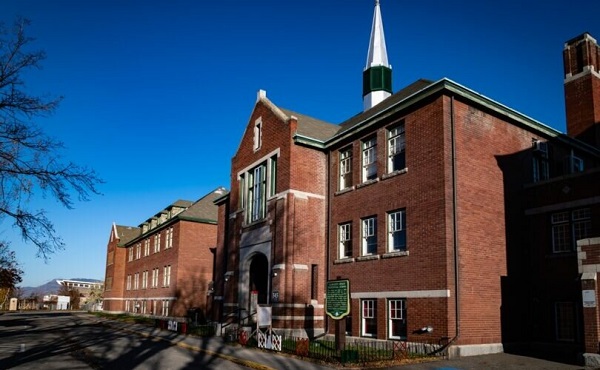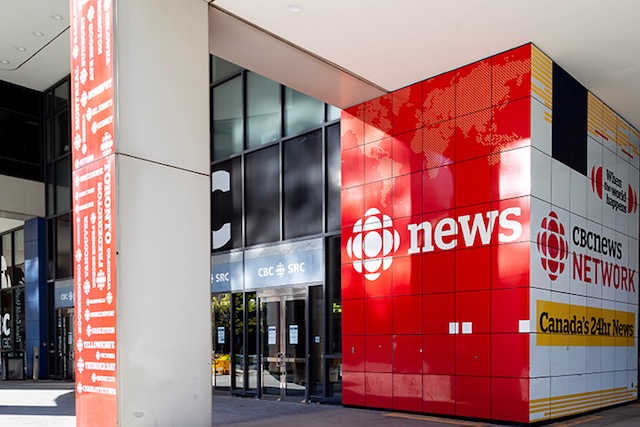Economy
Trudeau drops $220,000 on airplane food

News release from the Canadian Taxpayers Federation
You ever get the feeling the government is running a secret contest to see who can order up the most expensive meals while flying around the world?
Well if they are, we’ve got a new winner: The Right Honourable Prime Minister Justin Trudeau.
After Governor General Mary Simon spent $100,000 on airplane food, Trudeau said, ‘Hold my beef Wellington’ and doubled the taxpayer tab.
All that and more in this week’s Taxpayer Waste Watch.
Bon apétit.
Franco.
Fine China, fancy feasts and a $220,000 taxpayer tab
Welcome to Air Trudeau, where the cares are free, the juice is freshly squeezed, the meals are served on fine China and the bill is sent to you.
Prime Minister Justin Trudeau and his entourage spent $223,000 of your money on airplane food during a six-day tour of the Indo-Pacific region last fall, according to government records dug up by the Canadian Taxpayers Federation.
Eating that much could wear a silver spoon right out.
To put things in perspective: that’s enough money to cover a month of groceries for 165 Canadian families, or buy 13,937 glasses of Bev Oda’s favourite orange juice.
But the bill gets big when this is the grocery list:
Beef brisket and parsley mashed potatoes with truffle oil. Pan fried beef tenderloin with port wine reduction sauce. Braised lamb shanks with steamed broccoli and boiled baby potatoes. Strawberry shortcake and baked cheesecake with pistachio brittle.
Sounds just like the meals you get on Air Canada or WestJet, right?
The records indicate staff were told Trudeau’s meals (and ONLY Trudeau’s meals) must be appropriately garnished and served on China dishware.
Pro-tip for the prime minister:
Have you seen your polling numbers lately? It might be tough to connect with the middle class while chowing down on braised lamb shanks, topped with a sprig of parsley and served on fine China.
Snacks offered onboard Air Trudeau included cured meats and artisanal cheeses, veggies and dip, and fresh papaya, pineapple, dragon fruit, watermelon and berries. And the juice served was noted as being “freshly-squeezed.”
A special request was put in for the plane to be stocked with Trudeau’s favourite brand of premium alkaline spring water, and staff picked up $900 worth of pop and chips before take-off. Trudeau and his entourage also spent $300 on movies and magazines.
Well we already know the prime minister doesn’t read his briefing notes, so it’s good he had the latest editions of the Jacobin and Mad Magazine to keep him occupied – it was a long flight, after all.
All told, the trip cost you $1.9 million and counting.
Trudeau has now claimed the top spot on our leaderboard for the most extravagant taxpayer-funded travel expenses, surpassing Governor General Mary Simon’s legendary March 2022 performance, when she gobbled up $100,000 worth of airplane food.
After details of Simon’s airplane extravaganza went public (courtesy of your friends at the CTF), a parliamentary committee summoned high-ranking bureaucrats to answer for the outrageous tab.
The bureaucrats pinkie promised to change the rules and stop frivolous spending.
Well clearly those efforts are going swimmingly…
The government set out to lower costs.
Then Trudeau doubled them.
Poilievre grills Trudeau about airplane feast in House of Commons
Conservative Party Leader Pierre Poilievre grilled Trudeau about his $223,000 worth of airplane food expenses in the House of Commons.
Trudeau’s EV corporate welfare worse than you think
Federal and provincial governments are ponying up billions more in electric vehicle battery subsidies than the corporations themselves are spending to build their own factories.
The Parliamentary Budget Officer released a report this week showing just how bad taxpayers are being taken to the cleaners on these corporate welfare deals.
Governments promised $52 billion to these corporations. The corporations are only spending $46 billion.
Does that sounds like a good deal to you?
Business
Most Canadians say retaliatory tariffs on American goods contribute to raising the price of essential goods at home

- 77 per cent say Canada’s tariffs on U.S. products increase the price of consumer goods
- 72 per cent say that their current tax bill hurts their standard of living
A new MEI-Ipsos poll published this morning reveals a clear disconnect between Ottawa’s high-tax, high-spending approach and Canadians’ level of satisfaction.
“Canadians are not on board with Ottawa’s fiscal path,” says Samantha Dagres, communications manager at the MEI. “From housing to trade policy, Canadians feel they’re being squeezed by a government that is increasingly an impediment to their standard of living.”
More than half of Canadians (54 per cent) say Ottawa is spending too much, while only six per cent think it is spending too little.
A majority (54 per cent) also do not believe federal dollars are being effectively allocated to address Canada’s most important issues, and a similar proportion (55 per cent) are dissatisfied with the transparency and accountability in the government’s spending practices.
As for their own tax bills, Canadians are equally skeptical. Two-thirds (67 per cent) say they pay too much income tax, and about half say they do not receive good value in return.
Provincial governments fared even worse. A majority of Canadians say they receive poor value for the taxes they pay provincially. In Quebec, nearly two-thirds (64 per cent) of respondents say they are not getting their money’s worth from the provincial government.
Not coincidentally, Quebecers face the highest marginal tax rates in North America.
On the question of Canada’s response to the U.S. trade dispute, nearly eight in 10 Canadians (77 per cent) agree that Ottawa’s retaliatory tariffs on American products are driving up the cost of everyday goods.
“Canadians understand that tariffs are just another form of taxation, and that they are the ones footing the bill for any political posturing,” adds Ms. Dagres. “Ottawa should favour unilateral tariff reduction and increased trade with other nations, as opposed to retaliatory tariffs that heap more costs onto Canadian consumers and businesses.”
On the issue of housing, 74 per cent of respondents believe that taxes on new construction contribute directly to unaffordability.
All of this dissatisfaction culminates in 72 per cent of Canadians saying their overall tax burden is reducing their standard of living.
“Taxpayers are not just ATMs for government – and if they are going to pay such exorbitant taxes, you’d think the least they could expect is good service in return,” says Ms. Dagres. “Canadians are increasingly distrustful of a government that believes every problem can be solved with higher taxes.”
A sample of 1,020 Canadians 18 years of age and older was polled between June 17 and 23, 2025. The results are accurate to within ± 3.8 percentage points, 19 times out of 20.
The results of the MEI-Ipsos poll are available here.
* * *
The MEI is an independent public policy think tank with offices in Montreal, Ottawa, and Calgary. Through its publications, media appearances, and advisory services to policymakers, the MEI stimulates public policy debate and reforms based on sound economics and entrepreneurship.
Business
Trump confirms 35% tariff on Canada, warns more could come

Quick Hit:
President Trump on Thursday confirmed a sweeping new 35% tariff on Canadian imports starting August 1, citing Canada’s failure to curb fentanyl trafficking and retaliatory trade actions.
Key Details:
- In a letter to Canadian Prime Minister Mark Carney, Trump said the new 35% levy is in response to Canada’s “financial retaliation” and its inability to stop fentanyl from reaching the U.S.
- Trump emphasized that Canadian businesses that relocate manufacturing to the U.S. will be exempt and promised expedited approvals for such moves.
- The administration has already notified 23 countries of impending tariffs following the expiration of a 90-day negotiation window under Trump’s “Liberation Day” trade policy.
Diving Deeper:
President Trump escalated his tariff strategy on Thursday, formally announcing a 35% duty on all Canadian imports effective August 1. The move follows what Trump described as a breakdown in trade cooperation and a failure by Canada to address its role in the U.S. fentanyl crisis.
“It is a Great Honor for me to send you this letter in that it demonstrates the strength and commitment of our Trading Relationship,” Trump wrote to Prime Minister Mark Carney. He added that the tariff response comes after Canada “financially retaliated” against the U.S. rather than working to resolve the flow of fentanyl across the northern border.
Trump’s letter made clear the tariff will apply broadly, separate from any existing sector-specific levies, and included a warning that “goods transshipped to evade this higher Tariff will be subject to that higher Tariff.” The president also hinted that further retaliation from Canada could push rates even higher.
However, Trump left the door open for possible revisions. “If Canada works with me to stop the flow of Fentanyl, we will, perhaps, consider an adjustment to this letter,” he said, adding that tariffs “may be modified, upward or downward, depending on our relationship.”
Canadian companies that move operations to the U.S. would be exempt, Trump said, noting his administration “will do everything possible to get approvals quickly, professionally, and routinely — In other words, in a matter of weeks.”
The U.S. traded over $762 billion in goods with Canada in 2024, with a trade deficit of $63.3 billion, a figure Trump called a “major threat” to both the economy and national security.
Speaking with NBC News on Thursday, Trump suggested even broader tariff hikes are coming, floating the idea of a 15% or 20% blanket rate on all imports. “We’re just going to say all of the remaining countries are going to pay,” he told Meet the Press moderator Kristen Welker, adding that “the tariffs have been very well-received” and noting that the stock market had hit new highs that day.
The Canadian announcement is part of a broader global tariff rollout. In recent days, Trump has notified at least 23 countries of new levies and revealed a separate 50% tariff on copper imports.
“Not everybody has to get a letter,” Trump said when asked if other leaders would be formally notified. “You know that. We’re just setting our tariffs.”
-

 COVID-1922 hours ago
COVID-1922 hours agoFDA requires new warning on mRNA COVID shots due to heart damage in young men
-

 Business20 hours ago
Business20 hours agoCarney’s new agenda faces old Canadian problems
-

 Indigenous21 hours ago
Indigenous21 hours agoInternal emails show Canadian gov’t doubted ‘mass graves’ narrative but went along with it
-

 Daily Caller17 hours ago
Daily Caller17 hours agoBlackouts Coming If America Continues With Biden-Era Green Frenzy, Trump Admin Warns
-

 Bruce Dowbiggin23 hours ago
Bruce Dowbiggin23 hours agoEau Canada! Join Us In An Inclusive New National Anthem
-

 Business2 days ago
Business2 days agoCBC six-figure salaries soar
-

 Addictions2 days ago
Addictions2 days agoCan addiction be predicted—and prevented?
-

 Addictions2 days ago
Addictions2 days agoMore young men want to restrict pornography: survey



